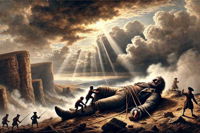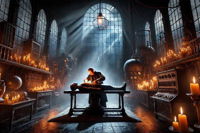
Scenes from British Literature Quiz
Images of Literary Scenes
Click each scene from these classic British novels and stories to get a closer look at the clues. Then match each scene with its corresponding work. It's a literary extravaganza!
by trident.
Estimated time: 3 mins.











